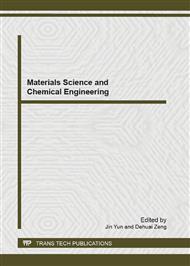p.735
p.742
p.747
p.753
p.759
p.765
p.770
p.777
p.783
Conversion of Waste Paper Sludge into Heavy Metal Adsorbent Using Sulfur Impregnation
Abstract:
During the manufacture of recycled paper, paper sludge is discharged as an industrial waste. The amount of sludge discharged from manufacturing plants increases annually. In this study, the organic constituents, such as cellulose, in the sludge were converted into carbonaceous heavy metal absorbents using sulfur treatment. Paper sludge was washed with 5 M HCl solution to remove inorganic content, and then immersed in 1 M K2S solution for 24 h. After immersion, the sample was heated at 800 °C for 1 h under N2 atmosphere, and then cooled to room temperature to obtain the product. The sludge was mainly composed of inorganic content, such as calcite, kaolinite and talc, and organic content. Calcite was removed with acid washing and sulfur was impregnated into the sludge by immersing it into the K2S solution. The product with sulfur impregnation indicated higher removal abilities for lead and nickel than those without sulfur impregnation.
Info:
Periodical:
Pages:
759-764
Citation:
Online since:
May 2013
Authors:
Keywords:
Price:
Сopyright:
© 2013 Trans Tech Publications Ltd. All Rights Reserved
Share:
Citation:


